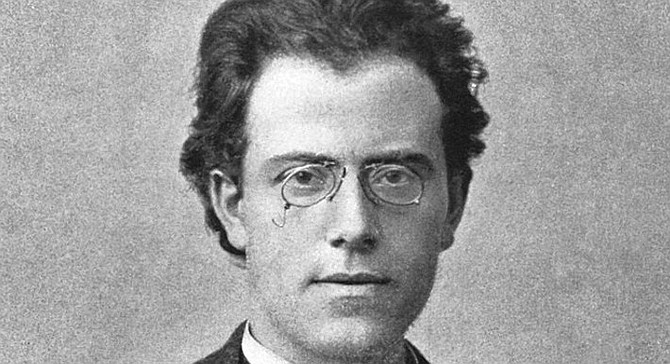 Facebook
Facebook
 X
X
 Instagram
Instagram
 TikTok
TikTok
 Youtube
Youtube

I had said these articles would be a deep dive into an upcoming piece on the San Diego classical music calendar. On second thought these are more of a medium dive. A deep dive would include technical analysis of the piece and that’s just not my forte.
Mahler’s Symphony No. 1: Titan might be dwarfed by his Symphony No, 2: Resurrection but amongst first symphonic efforts Mahler’s first looms large. Is there a first symphony by any composer which is performed more often? I can’t think of one.
Sibelius’s Symphony No. 1 is as indicative of Sibelius as Mahler’s first is indicative of Mahler but there is no contest when it comes to number of performances and the scope of the composition. Sibelius follows in the steps of Tchaikovsky’s symphonies while Mahler is continuing, on an extreme tangent, down the trail that Bruckner was blazing. When it comes to writing symphonies it is difficult to top the Austrians.
Regarding the scope of Mahler’s Symphony No. 1, there are 10 French Horns, 5 trumpets, 4 trombones, tuba, 2 sets of timpani, and a lovely kitchen sink. The length of the symphony is anywhere between 55 minutes and an hour.
Mahler wrote this first symphony in 1887-88 at the age of 27. The score went through numerous revisions before finding its final form in 1996.
The music is almost immediately recognizable as Mahler. Mahler continues to extend the symphonic form as he writes symphony after symphony but his initial voice remains the same. It’s like a great actor. The actor might take on more and more challenging roles but the quality of her voice will remain consistent—even Meryl Streep sounds like Meryl Streep in all her differing actorial accents.
So it is with Mahler and his first symphony. All the Mahlerian characteristics and quirks are present from the frenetic woodwinds to the nervous strings to the stringent brass fanfares, all are present and accounted for. Another way to say that would be the shimmering woodwinds, agitato strings and stentorian brass fanfares are all present and accounted for.
Mahler’s music is overtly psychological and biographical, perhaps more than any other composer. The agitations and triumphs of his life are in the music for all to hear. Does that mean we leave the concert feeling agitated? Maybe. There’s also a chance to leave feeling triumphant. I guess it depends on what you had for breakfast that day of the concert.


I had said these articles would be a deep dive into an upcoming piece on the San Diego classical music calendar. On second thought these are more of a medium dive. A deep dive would include technical analysis of the piece and that’s just not my forte.
Mahler’s Symphony No. 1: Titan might be dwarfed by his Symphony No, 2: Resurrection but amongst first symphonic efforts Mahler’s first looms large. Is there a first symphony by any composer which is performed more often? I can’t think of one.
Sibelius’s Symphony No. 1 is as indicative of Sibelius as Mahler’s first is indicative of Mahler but there is no contest when it comes to number of performances and the scope of the composition. Sibelius follows in the steps of Tchaikovsky’s symphonies while Mahler is continuing, on an extreme tangent, down the trail that Bruckner was blazing. When it comes to writing symphonies it is difficult to top the Austrians.
Regarding the scope of Mahler’s Symphony No. 1, there are 10 French Horns, 5 trumpets, 4 trombones, tuba, 2 sets of timpani, and a lovely kitchen sink. The length of the symphony is anywhere between 55 minutes and an hour.
Mahler wrote this first symphony in 1887-88 at the age of 27. The score went through numerous revisions before finding its final form in 1996.
The music is almost immediately recognizable as Mahler. Mahler continues to extend the symphonic form as he writes symphony after symphony but his initial voice remains the same. It’s like a great actor. The actor might take on more and more challenging roles but the quality of her voice will remain consistent—even Meryl Streep sounds like Meryl Streep in all her differing actorial accents.
So it is with Mahler and his first symphony. All the Mahlerian characteristics and quirks are present from the frenetic woodwinds to the nervous strings to the stringent brass fanfares, all are present and accounted for. Another way to say that would be the shimmering woodwinds, agitato strings and stentorian brass fanfares are all present and accounted for.
Mahler’s music is overtly psychological and biographical, perhaps more than any other composer. The agitations and triumphs of his life are in the music for all to hear. Does that mean we leave the concert feeling agitated? Maybe. There’s also a chance to leave feeling triumphant. I guess it depends on what you had for breakfast that day of the concert.
Comments